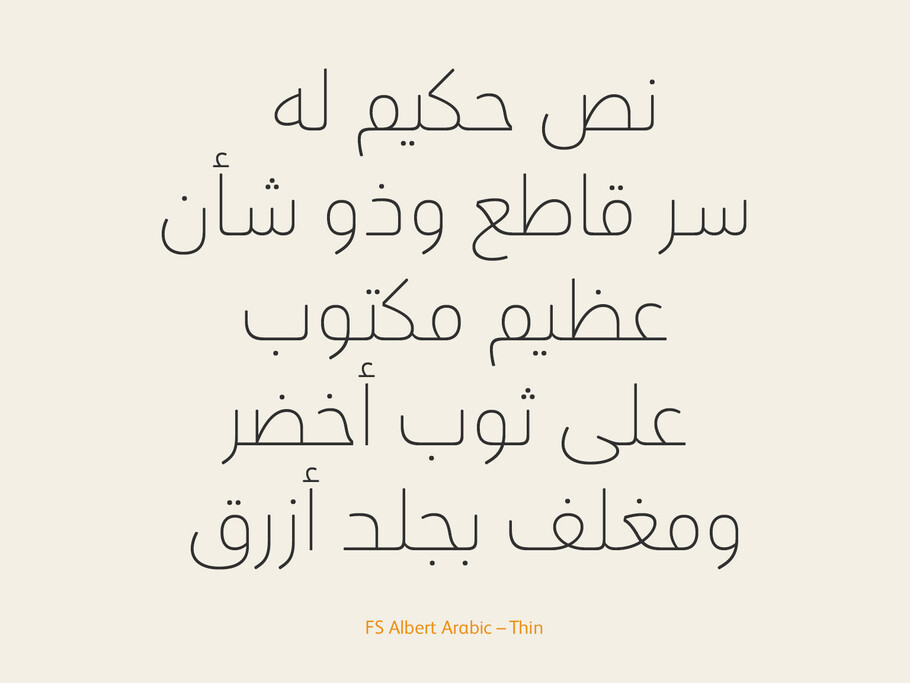FS Albert® Arabic
FS Albert® Arabic
Emanuela Conidi Knowledge share
FS Albert Arabic has been designed as a harmonious companion to the FS Albert standard Latin family.
As a design starting point we chose to reference the Kufic Arabic style for FS Albert with its simpler, more geometric and uniform shapes as we felt this worked best with the sans serif nature of the font, plus it was also more suitable for the type’s simple and low stroke modulation contrast. We also felt that it was important to maintain the original charming feel of FS Albert within the Arabic design in terms of its friendly handwritten qualities. In order to achieve this, we were inspired by some Naskh style shapes and these have been added to the geometric Kufic base. The result is a hybrid design of Kufic and Naskh that maintains a human feel and a less rigid appearance, yet being functional and structured.
Throughout the design process many alternative forms were explored with a different degree of squareness and rigidity. Some elements of the Naskh style that are more related to calligraphic movements were developed and added where possible in order to soften the basic geometric structure of the Kufic shapes. Some of these traits can be seen for instance in the rounded bowl common to many characters like Jim, Qaf and Nun; the curved tail of Waw and Reh; the round counters of Mim; the deep joining of Tah; the design of the letter Yeh and Heh.
The design of FS Albert Arabic has been carefully balanced to harmonise with its Latin sans serif counterpart and to assure visual compatibility between the Arabic and Latin script. This is particularly important for bilingual publications, when the two scripts are used and seen together. The two fonts have the same tone of voice, same optical size, weight and rhythm.
FS Albert Arabic has generous open counters, monolinear strokes, an informal and friendly appearance.
FS Albert Arabic is now available in 5 weights from Thin to ExtraBold. It supports Persian and Urdu and includes proportional and tabular numerals. It has well balanced mark and mark to mark positioning, supports full vocalisation and the Hijra feature.


